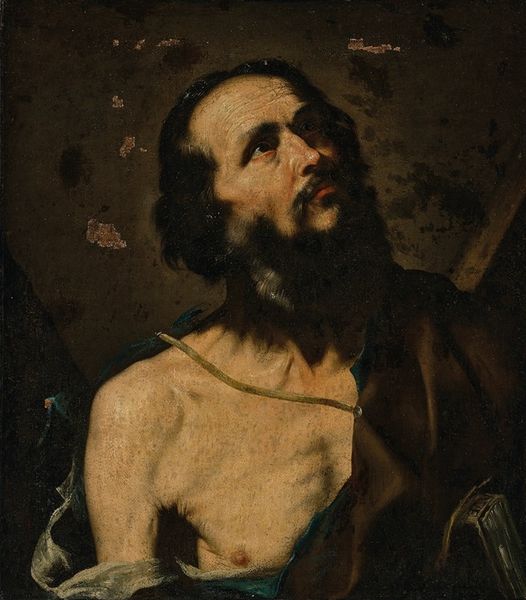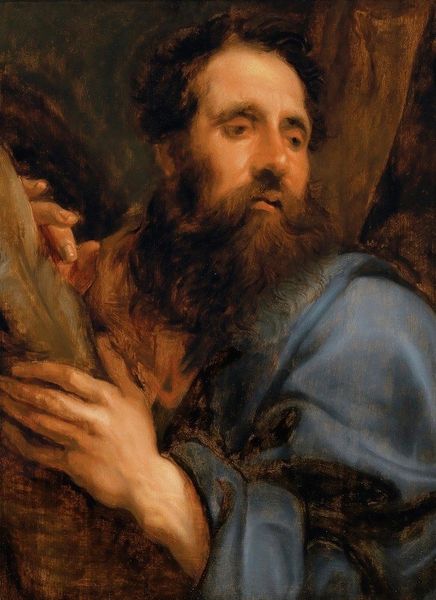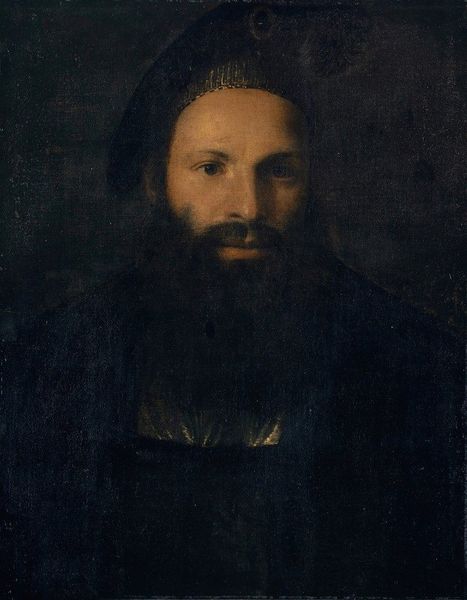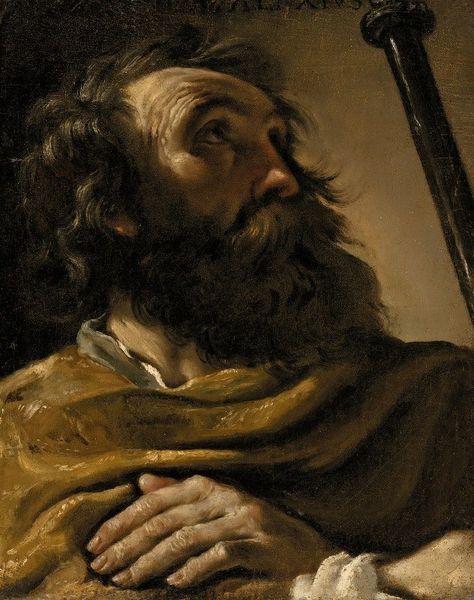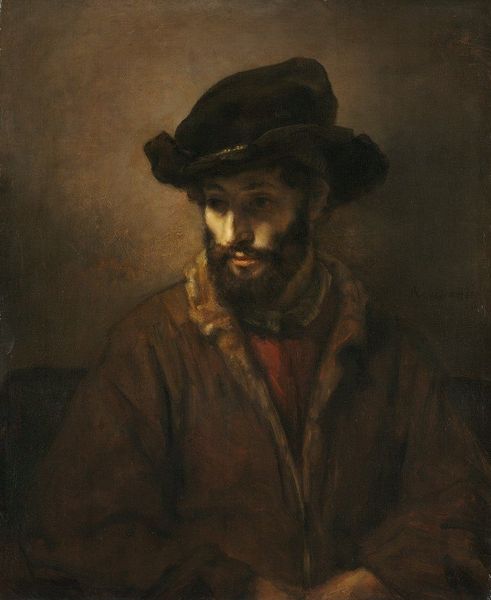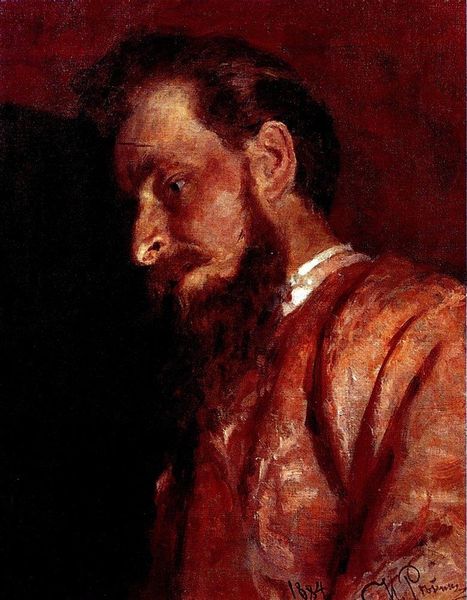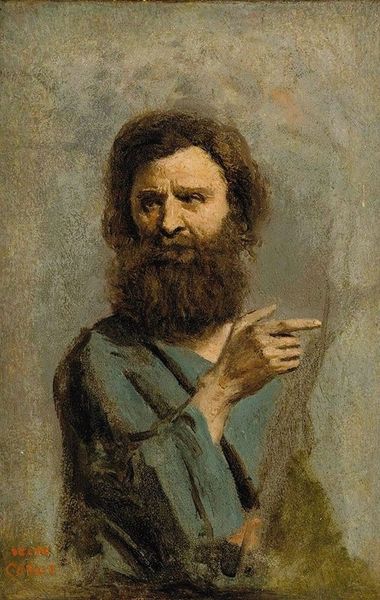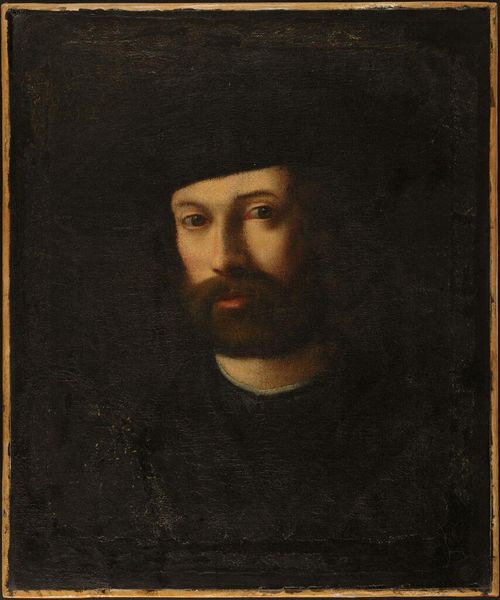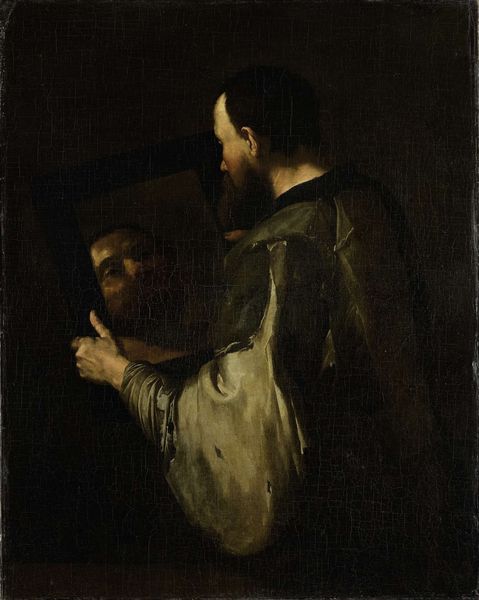
Sketch Of Head And Hands Of St. John For Jésus Remet À Saint Pierre Les Clefs Du Paradis
0:00
0:00
painting, oil-paint
#
portrait
#
figurative
#
portrait
#
painting
#
oil-paint
#
history-painting
#
italian-renaissance
Copyright: Public Domain: Artvee
Curator: Let's turn our attention to this oil sketch of Saint John's head and hands. It's by Jean Auguste Dominique Ingres and it seems to be related to his work "Jésus Remet à Saint Pierre les Clefs du Paradis." The unfinished quality gives us a glimpse into his working method. Editor: My first thought is, wow, that expression is intense. The wide-eyed stare, combined with the darkness, makes it almost unsettling. It has this raw, emotional quality, even unfinished. Curator: Precisely. It provides invaluable insight into Ingres's academic training, which, in the 19th century, involved rigorous life drawing. It demonstrates how deeply the old masters influenced him, even in a preparatory work. The focus on the hands is also indicative of its role as a preliminary study, highlighting gesture and expressiveness. Editor: I’m curious about Saint John himself as a subject, though. Is Ingres deliberately drawing upon existing symbolism, the conventional representations? This kind of visual language can reinforce established power structures and gendered ideas linked to faith and morality, what do you think about it? Curator: That's an interesting angle, and certainly worth considering when thinking about Ingres' broader body of work. This sketch appears to be more directly connected to his exploration of the central narrative in "Jésus Remet..." focusing on how gesture and posture might contribute to that specific scene's narrative impact. Saint John plays a secondary role in the scene that features Jesus giving the keys to Saint Peter. Editor: Still, it would be good to explore these representations from a perspective rooted in understanding power dynamics. How often do we see marginalized figures portrayed this way in these historical artworks, and what meaning does this absence take when framed through intersectional social paradigms? Curator: Definitely relevant for a deeper cultural understanding. What strikes me now is the tension he creates through the sharp contrast of light and shadow. It creates such dramatic visual engagement, which invites consideration for the function of studies like these, specifically within the trajectory of Academic art. Editor: For me, thinking about the painting like this, gives this art a fascinating dialogue that pushes boundaries and helps bring more inclusivity in the way we perceive art and its context.
Comments
No comments
Be the first to comment and join the conversation on the ultimate creative platform.
